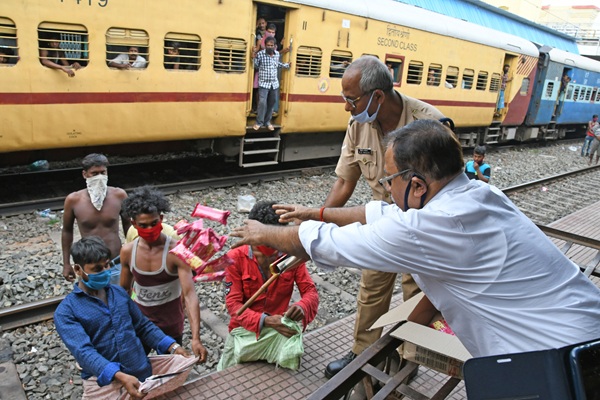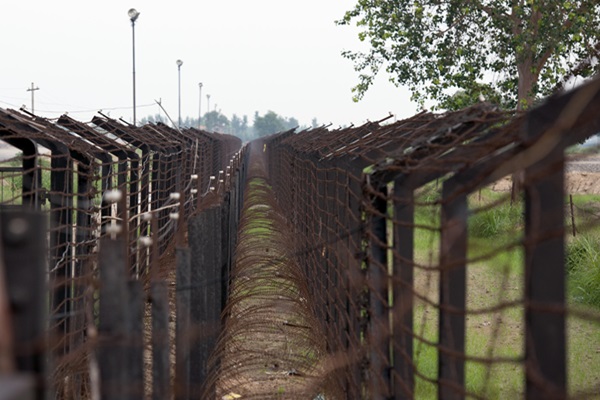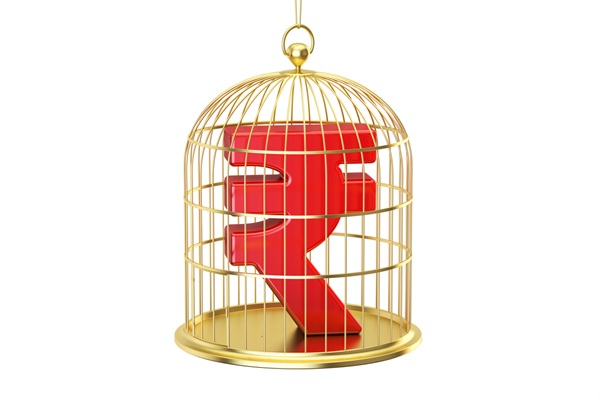.png)
When Art Slaps You With Your Own Privilege
A film about migrant workers becomes a mirror for our privilege, reflecting the gaps in our economy, our ambitions, and our national story. It is time to hold the gaze.

Phynix is a seasoned journalist who revels in playful, unconventional narration, blending quirky storytelling with measured, precise editing. Her work embodies a dual mastery of creative flair and steadfast rigor.
November 24, 2025 at 7:14 AM IST
Dear Insighter,
Some art does not simply move you. It ambushes you. It strikes with force.
It had been a long time since a film left me feeling so thoroughly and uncomfortably seen. Then I watched Homebound, Neeraj Ghaywan’s searing portrayal of migrant labourers during the pandemic and now India’s Oscar entry. In the stillness of my room, the film held up a mirror that I had avoided. In that reflection was the soft cushion that protected my own pandemic experience.
We all lived through the crisis. We all have our personal inventories of loss and strain. We all remember the doomscrolling that made catastrophe feel routine. We all saw images and videos of migrants walking endless kilometres in blistering heat. We were outraged, exhausted, depressed. Some of us were separated from family. Many feared every step outside the door. Yet none of this compares to what those migrants endured.
They did not walk home in a moment of emotion. They walked because the city that depended on their labour abandoned them in an instant. They walked because hunger felt more real than the virus. They walked because if death was coming they wanted it to come among familiar faces rather than alone in a rented room in an indifferent city. They walked because dignity asked for it. And above all, they walked because they had no choice.
The slap of the film lies in the contrast. While we complained about the lack of house help, or the wrong cooking oil, or the search for alcohol during a lockdown, they counted their remaining strength and hoped their legs would carry them another day. We worried about passing the infection to older relatives. They worried about surviving the night. We had food apps and stocked kitchens. They had a long and unforgiving road.
Some viewers say the film feels restrained or incomplete. Perhaps. But it made many of us feel something again. And sometimes that is the point. Even the privilege of watching it at home, long after its release in theatres, is its own quiet reminder of insulation.
This reckoning with what we did not see, or chose not to see, echoes across the country today. It shows up in the stories we tell ourselves about progress, growth, reform, and resilience. It is present in every gap between narrative and reality.
Corporate India is flooded with optimism about a strong revival built on rate cuts, tax relief and talk of global decoupling. The story is enticing. Yet evidence remains thin, argues Dhananjay Sinha. Nifty sales have grown at a slow pace for many quarters. Consumer companies struggle to push even modest volume growth. Profits survive not because demand is rising but because companies delay passing on costs and hold wages flat. This is a cycle that keeps feeding itself. Companies fear weak demand. They hold back on wage growth. Demand then remains weak.
Even the labour market, which looks strong in aggregate data, hides a more troubling picture. Employment has risen. Unemployment has fallen. More women are in the workforce. Yet output per worker has barely moved, notes Rajesh Kumar. The country is hiring more people without producing much more. It is motion without movement. The festive season could not lift urban demand, analyses Akshi Chawla in this data story. Young workers continue to face instability. Women remain more vulnerable to swings in the job market. GDP reports smooth over fractures they cannot mend.
This is the landscape in which RBI Governor Sanjay Malhotra is trying to build a new rhythm. As R Gurumurthy writes, Malhotra’s first year has been defined by intellectual ambition, unexpected boldness and a few stretches that may have gone too far. His large rate and reserve cuts in June released a surge of liquidity and signalled confidence in domestic growth rather than global caution. That confidence may have been premature. Yet his recent relief package for exporters showed a different side of the RBI, according to Mint Owl. It was targeted, temporary, filter-based and clearly time-bound. It gave exporters breathing space without repeating the excesses of earlier eras. This blend of autonomy and restraint will shape the institution far more than any single rate move.
But monetary policy alone cannot rebuild the foundations of Indian growth. Our ambitions for a ten-trillion-dollar economy rest on institutions that are still shaped by older rules and older mindsets. As Arvind Mayaram reminds us, Indian scientists lead laboratories across the world while Indian universities struggle under outdated regulation. If we create the right institutional support, India could shorten decades of evolution into a single generational leap. If we fail, we remain dependent on intellectual imports.
Energy policy reveals the same hesitation. TK Arun warns the rush into battery storage helps the grid today but creates a deep vulnerability tomorrow because of reliance on Chinese supply chains. Healthcare remains a maze of disputed claims, unclear pricing and regulators who prefer advice to enforcement, observes Srinath Sridharan. Commodity policy reacts to global movements instead of anticipating them, notes G Chandrashekhar. In another piece, he explains how key agricultural estimates arrive late and distort markets. India still adjusts to volatility rather than shaping it.
Trade offers another mixed message. Exports to the US rebounded in October after months of decline, but the broader trend remains sharply negative, writes Ajay Srivastava. Meanwhile, gold and silver imports are surging—feeding domestic appetite rather than productive capacity—while gems and jewellery exports decline.
There are bright spots. As Indra Chourasia observes, SEBI’s review of thirty years of securities regulations is a rare example of proactive and thoughtful reform. But in technology, policy contradictions multiply. Mandatory labelling of AI-generated content sounds firm but is almost impossible to implement. Dev Chandrasekhar explains that it would place heavy burdens on startups and barely touch malicious actors. At a moment when AI could expand India’s economic capacity in profound ways, the country risks slowing its own momentum through compliance-heavy rules that do not address the real problem.
AI is becoming the new currency of global power. As knowledge defined the information age, AI capability will define the next one, opines V Thiagarajan. It will influence competitiveness, diplomacy, even exchange rates. India cannot afford either fear or miscalibration.
Education reform could strengthen India's hand, according to Sharmila Kantha. Allowing foreign universities to operate meaningfully could turn India from a mass exporter of students into a serious global education hub—diversifying services exports beyond IT and business services.
Politics mirrors these institutional tensions. Bihar’s recent election produced a decisive mandate for the NDA and returned Nitish Kumar to his tenth term. Amitabh Tiwari dissects how the ministry reflects careful caste arithmetic but also reveals deep regional and gender imbalances. The larger story was the collapse of the opposition. It did not fail because the Congress struggled. It failed because the RJD could not defend its own strongholds.
That same narrative impulse shapes our corporate mythology. The story of Lalit Keshre, the village boy turned billionaire, became a national fable. Yet what we celebrated was not mobility but the illusion of mobility, argues Kirti Tarang Pande. Keshre did not seek myth making. We created it. His story became a symbol of opportunity that remains out of reach for most Indians. We see the reflection we want rather than the one that exists.
Which brings me back to Homebound. We want to believe the migrants chose to walk. We want to believe wage stagnation is temporary. We want to believe institutions will transform without discomfort. We want GDP charts to reflect real progress.
But uncomfortable truths do not disappear when ignored. Migrants were not walking toward opportunity. They were walking toward dignity. That is not a metaphor. It is the truth.
India’s institutions face their own mirrors. The choice is simple. Confront what has been long avoided or sink into the comfort of convenient stories. The first path is difficult. The second feels easier but carries a cost that shows up not only in GDP but in human lives. It affects workers whose wages barely rise. Families crushed by healthcare bills. Startups slowed by short-sighted rules. Students and scientists held back by narrow frameworks.
Some art refuses to let you look away. Homebound forced me to sit with my privilege and acknowledge what I did not see. Perhaps that is what our institutions need as well. Not gentler stories but the courage to face the reality beneath them.
Stability without dynamism becomes stagnation.
Employment without productivity becomes hollow.
Until next time, yours in necessary discomfort
Phynix
Also Read:
- Why Your Partner Hates Instagram, and Other Stories by Kalyani Srinath: From filters to FOMO, how the app became the unofficial counsellor and chaos machine for modern relationships.
- The AI Bubble’s Shaky Math by Carl Benedikt Frey: This tech boom mirrors the dot-com era, but with higher costs, faster depreciation, and systemic risks.
- Turkey and India: A Relationship Drifting into the Crosswinds by Lt Gen Syed Ata Hasnain: Is Ankara’s posture driven by ideological projection or cold geopolitical calculation?
- Can the American Right Find Its Way Back? by Michael R. Strain: How the MAGA movement became a conduit for ugly forces to make a run at the mainstream.
- Why the US Economy Has Remained Stronger Than Expected by Pinelopi Koujianou Goldberg: Were the doom forecasts wrong, or did US policy just dodge a slowdown?



